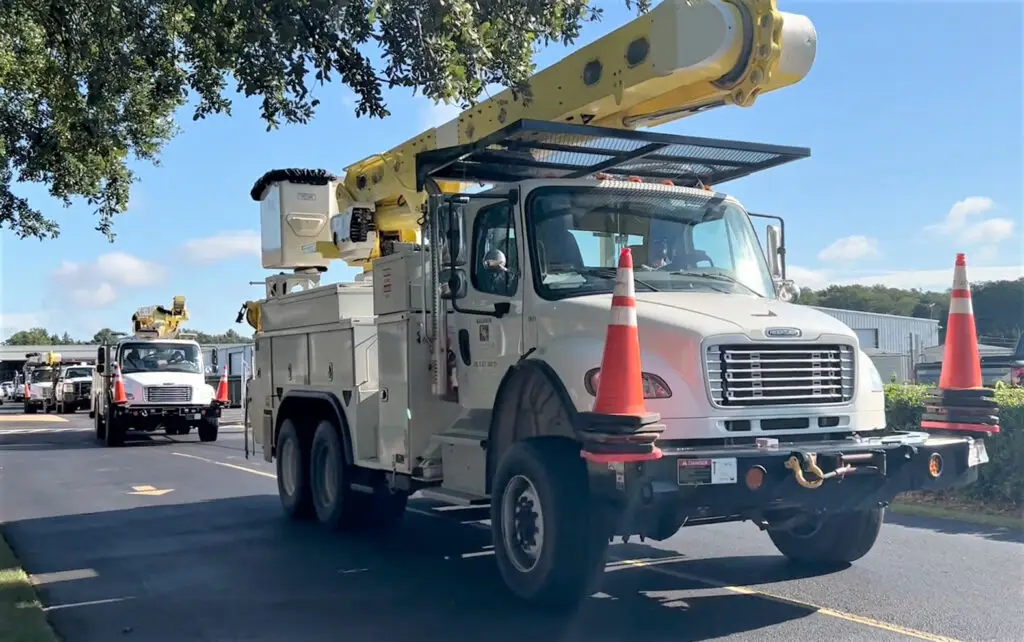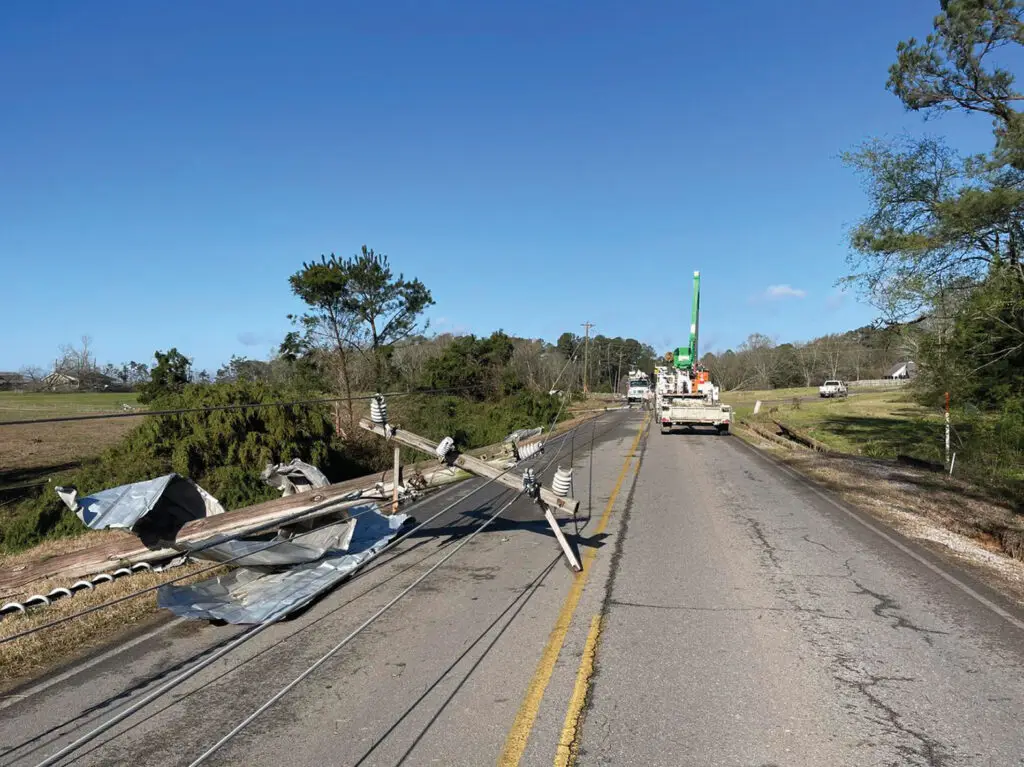By Jennah Denney

Electric cooperatives employ a variety of methods to reduce the likelihood of power outages – from regular tree trimming to equipment maintenance and repairs, to local grid updates. But outages do occur, and when they do, co-ops are ready to respond.
Another way co-ops prepare for major outages and disasters is through mutual aid, which is a collaborative approach to emergency planning. The mutual aid model allows electric co-ops to help each other out during times of need. This approach permits co-ops to “borrow” restoration workers from other co-ops, thereby increasing the workforce response to areas impacted by a major outage event. It’s essentially about neighbors helping neighbors, even when those neighbors are fellow co-ops located hundreds of miles away.
Electric co-ops operate according to seven principles, and principles six and seven, Cooperation among Cooperatives and Concern for Community, are directly connected to the mutual aid model.
Electric co-ops were formed to provide reliable electric service to their members at the lowest reasonable cost, and mutual aid has been a fundamental part of our DNA since co-ops were formed. The concept of mutual aid originated with the rural electrification efforts in the 1930s. From the very beginning, electric co-ops relied on each other to assist in times of need, and mutual aid provides an essential safety net in times of crisis.

Mutual aid ultimately benefits co-ops’ consumer-members. During major outage events, co-ops can increase their workforce and respond more quickly, leading to shorter outage times for members.
Disaster response and mutual aid is managed by electric co-ops, as well as co-ops’ statewide organizations, like the Alabama Rural Electric Association (AREA), which publishes Alabama Living. The statewide organizations assist with coordination between states, helping to ensure the necessary personnel and equipment, which are the key ingredients of the mutual aid recipe. These efforts require effective logistics management and experts who fully understand resource allocation and have the know-how to respond under pressure.
During major outage events, a variety of equipment is necessary to complete repairs, including bucket trucks and other specialized vehicles, utility poles, transformers and wires. Skilled lineworkers, tree trimmers, damage assessors and other key personnel are also often shared among co-ops. These experts provide critical skills and manpower to speed up the restoration process.

Because the national network of transmission and distribution infrastructure owned by electric co-ops has been built to federal standards, line crews from any electric co-op in the U.S. can arrive on the scene ready to provide emergency support and secure in their knowledge of the system’s engineering.
Today, mutual aid continues to be a vital part of how electric co-ops operate and serve members of their local communities. The goal of mutual aid is to restore power as safely and quickly as possible after a major outage event. By sharing resources, co-ops can significantly enhance their response capabilities. In essence, mutual aid embodies the sixth cooperative principle of “Cooperation Among Cooperatives” and ensures that members receive reliable electricity even in the face of major challenges.
Jennah Denney writes on consumer and cooperative affairs for the National Rural Electric Cooperative Association, the national trade association representing more than 900 local electric cooperatives. From growing suburbs to remote farming communities, electric co-ops serve as engines of economic development for 42 million Americans across 56% of the nation’s landscape.




